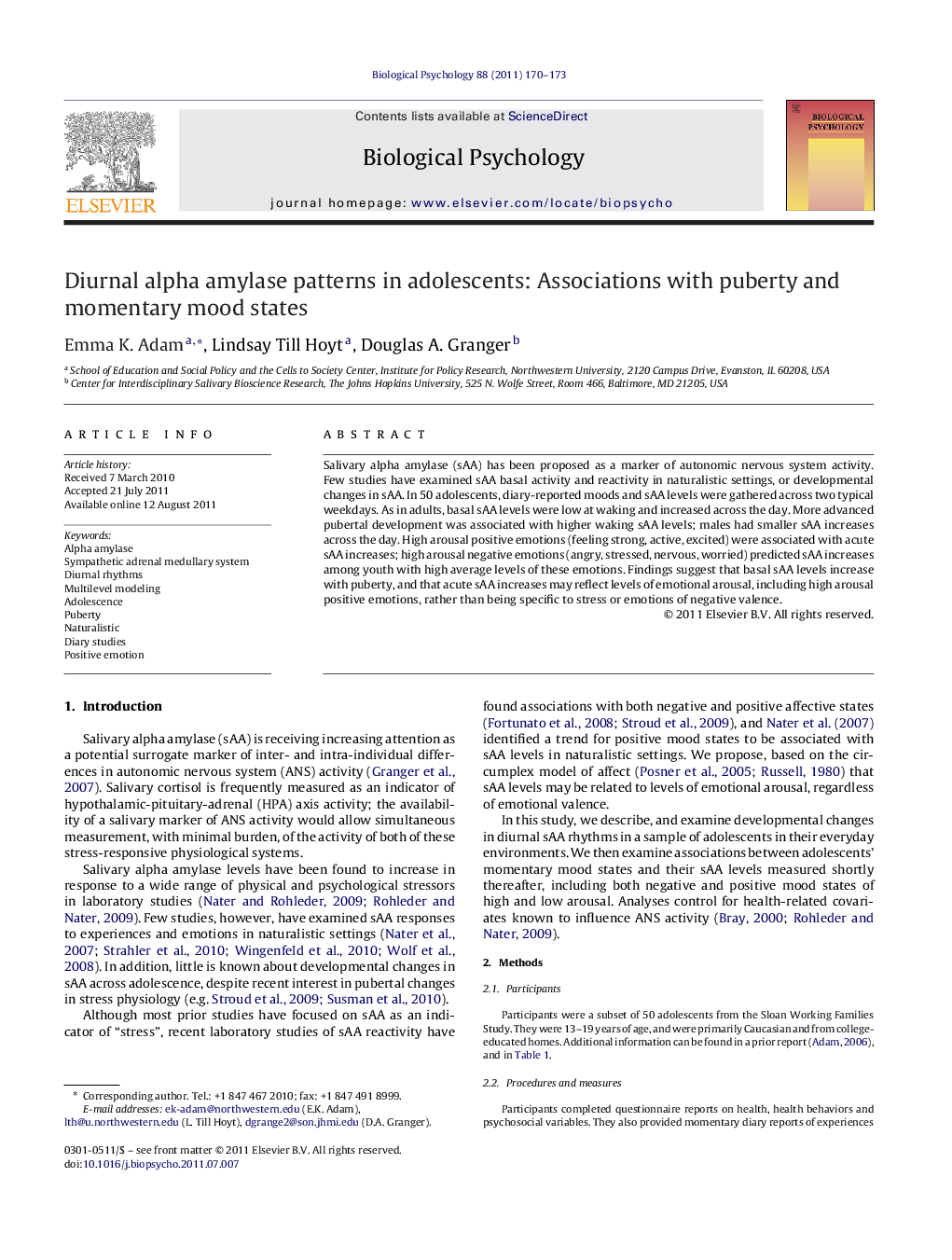| کد مقاله | کد نشریه | سال انتشار | مقاله انگلیسی | نسخه تمام متن |
|---|---|---|---|---|
| 921116 | 1473880 | 2011 | 4 صفحه PDF | دانلود رایگان |

Salivary alpha amylase (sAA) has been proposed as a marker of autonomic nervous system activity. Few studies have examined sAA basal activity and reactivity in naturalistic settings, or developmental changes in sAA. In 50 adolescents, diary-reported moods and sAA levels were gathered across two typical weekdays. As in adults, basal sAA levels were low at waking and increased across the day. More advanced pubertal development was associated with higher waking sAA levels; males had smaller sAA increases across the day. High arousal positive emotions (feeling strong, active, excited) were associated with acute sAA increases; high arousal negative emotions (angry, stressed, nervous, worried) predicted sAA increases among youth with high average levels of these emotions. Findings suggest that basal sAA levels increase with puberty, and that acute sAA increases may reflect levels of emotional arousal, including high arousal positive emotions, rather than being specific to stress or emotions of negative valence.
► Salivary alpha amylase (sAA) is a marker of autonomic nervous system activity.
► We related sAA levels to adolescent diary reports of mood in everyday settings.
► Adolescent sAA levels were low in the morning and increased across the day.
► Adolescents with more advanced pubertal development had higher basal sAA.
► High arousal positive mood states predicted acute increases in sAA in adolescents.
► High arousal negative mood states predicted acute increases in sAA for youth with high average levels of these emotions.
Journal: Biological Psychology - Volume 88, Issues 2–3, December 2011, Pages 170–173